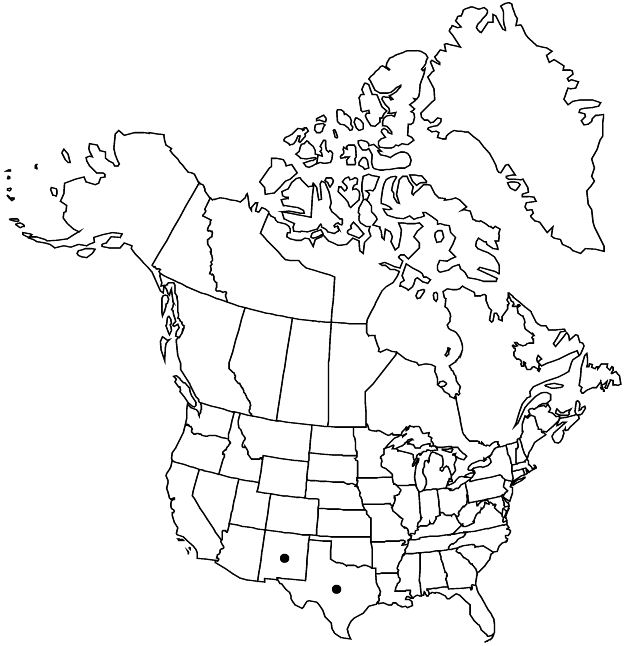Garrya goldmanii
Contr. U.S. Natl. Herb. 16: 157. 1913.
Shrubs (0.5–)1–2.5 m, branchlets puberulent, glabrescent. Leaves: blade gray-green, flat to concave-convex, elliptic to oblong-elliptic, ovate-elliptic, or broadly lanceolate, 1.6–4(–5.5) × 0.7–2.5 cm, length 2 times width, margins undulate, ± muricate-roughened and with callose rim, especially distally, apex obtuse to subacute and mucronulate, both surfaces usually persistently densely tomentulose, hairs coiling to recurved, or adaxial sometimes barely glossy, ± glabrescent. Aments: staminate 2–3 cm; pistillate loose, internodes 4+ mm, sometimes branched, erect, 1.5–3 cm; pistillate bracts distinct or connate basally, each usually subtending 1 flower, elliptic to ovate, at least proximal similar in size and shape to distal leaves, closely puberulent with curly or crisped hairs. Berries 4–8 mm diam., glabrous, not glaucous.
Phenology: Flowering Mar–Apr.
Habitat: Ledges, bluffs, slopes, talus, canyons, limestone substrates, ash woods, oak scrub, oak-pine-juniper woodlands.
Elevation: 1400–2400(–2700) m.
Distribution

N.Mex., Tex., Mexico (Chihuahua, Coahuila).
Discussion
Garrya goldmanii, which in the flora area is found in trans-Pecos Texas and southern New Mexico, has been treated as a subspecies of G. ovata (G. V. Dahling 1978), along with G. ovata subsp. mexicana Dahling, but all three taxa are distinct and justifiably treated at specific rank (G. L. Nesom 2012e). Both G. ovata and G. mexicana (Dahling) G. L. Nesom (G. ovata subsp. mexicana) are restricted to Mexico.
Selected References
None.